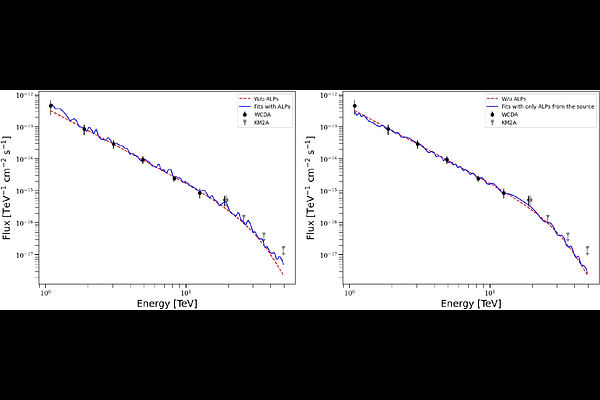Axion-like Particles and their Possible Impact on the Very High-Energy Spectrum of M87 Observed by LHAASO

Axion-like Particles and their Possible Impact on the Very High-Energy Spectrum of M87 Observed by LHAASO
A. Pratts, D Avila Rojas, J. Serna-Franco, M. M. González, R. Alfaro
AbstractThe detection of very high-energy (VHE) gamma rays from the active galaxy M87 by LHAASO, showing a possible spectral hardening around $20$ TeV, motivates the search for new physics beyond standard emission models. One promising candidate is axion-like particles (ALPs), hypothetical pseudo-scalar bosons that can oscillate into photons in the presence of cosmic magnetic fields. In this work, we investigate whether photon-ALP oscillations and an additional ALP-induced component can account for the tentative hardening observed in M87's VHE spectrum. We model the propagation of photons and ALPs through the jet, the Virgo cluster, the intergalactic medium, and the Galactic magnetic field, over a broad ALPs parameter space. Our statistical analysis finds that, with current LHAASO data, the inclusion of an ALPs component yields only a modest improvement over a standard scenario (maximum significance $\sim$1.56$\sigma$). However, if future observations transform current flux upper limits at tens of TeV into measured fluxes, the significance could reach $\sim$3$\sigma$, providing potential evidence for ALP-induced effects. Our results suggest that M87 remains a promising target to test fundamental physics, and upcoming VHE data could play a key role in probing ALPs parameter space.